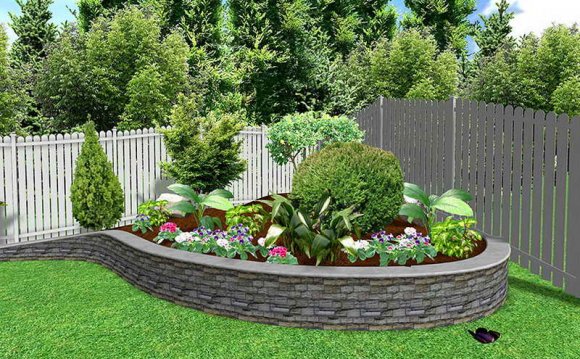
Everyone knows that you don’t want to place a water plant in a desert garden. That’s a recipe for plant-icide. But the same is true for many other types of plants — many prairie plants won’t thrive in waterlogged soil, and many rock garden plants keel over if they’re tucked into rich, loamy garden beds. How do you know if a plant will thrive in your landscape? It all boils down to right plant, right place.
This modern gardening philosophy plays matchmaker in the landscape, placing plants in a spot where they’ll naturally thrive — with minimal input from the gardener. The result is a landscape design that’s a breeze to maintain.
When you put the right plant in the right place, giving it nearly ideal growing conditions, several things happen:
The biggest investment you’ll make when you tackle right plant, right place gardening occurs before you stick trowel into soil. Planning is the key to success with this concept. By investing more time before planting, you’ll invest less time maintaining plantings. You’ll be gardening smarter and greener — and saving money, too.
The USDA Hardiness Zone reveals if plants will survive winters in your region. Many gardeners push the envelope on hardiness zone and grow plants from one zone warmer. They tuck these questionable survivors into a sheltered backyard or maybe in a planting bed near a southern wall of their home, where temperatures don’t fall quite as far in winter. For sure success, though, fill a landscape design using plants that are hardy to your zone. Not sure what your zone is? Learn here.
Some plants need full sun to thrive; others require shade. You’ll get the best gardening results when you know what kind of light your yard offers. To figure this out, on a day when you’re home, watch the sun as it hits your landscape areas. Ideally, check it every hour — and make notes. That way, when a plant tag says “partial shade, ” you’ll know if your yard serves those conditions.
Pictured below: Light makes all the difference in a plant’s success. Traditional bleeding-heart, Dicentra spectabilis, grows best in part to full shade.
Plants need specific soil types to grow their best. The great thing about soil is that you can change it by adding amendments. For instance, you can make clay soil, which is slow-draining, more porous and faster-draining by adding organic matter, like compost. Or you can create a completely different soil type in your landscape by building and filling raised beds, which also add some nifty hardscaping to the scene.
When you place the wrong plant in the wrong kind of soil, you’ll get mixed results. Worst-case scenario, the plant dies. Best case, it survives, but with lackluster results. Each soil type accommodates a different palette of plants. Before you embark on creating wholesale change in soil, research the kinds of plants that grow in the soil you have. You might find you can design an eye-catching landscape.
Pictured below: Butterfly weed, Asclepias tuberosa (left), is a native wildflower that’s a favorite among bees and butterflies. It grows well in either dry, rocky soil or soils with medium moisture. Red hot poker, Kniphofia uvaria (right), demands well-drained soil. This plant is growing on heavy clay soil that doesn’t drain — and isn’t doing well.
Plant tags state how large plants grow under ideal circumstances. Plan for this contingency and site plants accordingly, giving them ample elbow room for spreading and plenty of headspace for upward mobility.
In the right place, tall plants can form a privacy screen or stage a striking backdrop for other plantings. In the wrong place, they’re an eyesore. Conversely, plants that are too small can be dwarfed by surrounding plantings or hardscaping and disappear from view.
Pictured below: Choose plants carefully for edging walking paths. A short, fountainous grass like blue fescue, Festuca glauca (left), is just right for edging a path without becoming a tripping hazard or blocking the view. A mature hollyhock, Alcea rosea (right), grows too tall for placing at the front of a flower bed. Its imposing stature dwarfs shorter front-of-the-border plantings.
As you select plants, consider leaf and flower color, and how it will blend or clash with existing landscape and hardscaping. An easy way to succeed with color is to design with hues from the same color family. This works especially well in front yard gardens, where you want to make a great first impression on guests and passersby.
Another goof-proof method is scattering clumps of the same color throughout planting areas, creating what’s called a color echo. Don’t forget to study bloom time and plan for color throughout the gardening season. Add in contrasting leaf and plant textures to stir some drama in the landscape.
Pictured below: Create an eye-pleasing planting by using a color echo in plants and hardscaping. Here, burgundy repeats in barberry shrubs and a back door.
Most gardeners grapple with some kind of critter issue. Whether it’s tunneling voles, hopping rabbits or strolling deer, wildlife can make short work of any landscape design, transforming gardening efforts into stems and stubs. While you may not be able to win every battle, you can outsmart the animals. Installing hardscaping, like a fence, provides a physical barrier that can limit wildlife’s access to gardening areas. But in formal front yards or excessively large backyards, a fence isn’t always practical or affordable.
You can also outwit critters by choosing plants they dislike. If rabbits devour your coralbells (even though they’re not supposed to eat those), ditch the coralbells for something local bunnies find less palatable. In the long run, you’ll save yourself hours of aggravation and likely a wad of cash that you would have spent on replacement plants.
Pictured below: Give deer the brushoff by using plants they find distasteful, like cheery daffodils and variegated ‘Jack Frost’ Brunnera, B. macrophylla.















